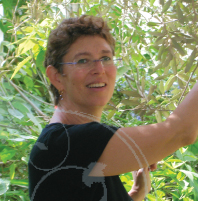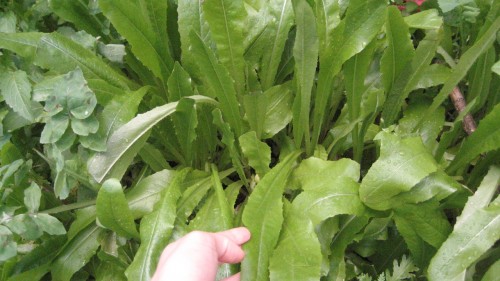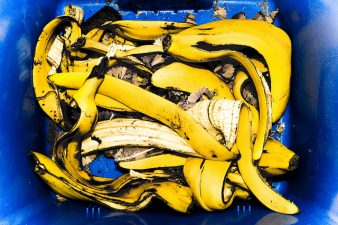 Last week Karin asked what weeds in her garden are edible. Today she finds out.
Last week Karin asked what weeds in her garden are edible. Today she finds out.
With winter in full bloom in the Middle East (this is when we get rain), urban gardens come alive, whether or not you want them to. The rains and cooler temperatures invite green leafy things to sprout up everywhere. And if you’re into urban foraging, or preserving some old traditions in the region, you might just want to go out and pick them. Take care to give your greens a good wash, because you don’t know who’s been peeing on them.
I’d been foraging for weeds in my backyard (read all about the experience here), and I asked an expert I know, Abbie Rosner from Culinary Tours of the Galilee to let me and readers know which weeds I can eat. Below, I include her answer, and pictures of the weeds which she says are edible. Enjoy!
 Abbie writes: Karin – Now that you’ve opened your eyes to the eating potential of all the wild greens around you, you’ll never look at the landscape in the same way again.
Abbie writes: Karin – Now that you’ve opened your eyes to the eating potential of all the wild greens around you, you’ll never look at the landscape in the same way again.
In your backyard alone you have three plants that are good for eating.
C is hubeisa (mallow in English, halamit in Hebrew) – gets its name from the Arabic word for bread (hubs) and it is indeed one of the most basic of all foraging foods.
E is ellet (olesh in Hebrew, chicory in English)- also a seasonal delicacy.
And F is stinging nettle which, if you pick carefully, can be used in soup – I’ve also heard of it being used as a medicinal tea.
If you go into your local Arab vegetable stand, you will probably find the ellet, and maybe hubeisa. Ellet has now been cultivated – hubeisa is so abundant that it is still gathered…
Below are the pictures for C, E and F from my previous post. Now, you can get out there and forage for yourselves. Know that you’ll have survival skills if the grim global warming prophecies come to light.
C: This is hubeisa or mallow, in English.

F: This is stinging nettle. Watch out for the sting!

If you’re already cooking up some weeds, why not make a whole meal? We’ve got tons of Levant area and Middle East cuisine recipes.
More green recipes:
Learn to Make Baba Ghanoush – It’s Easier Than You Think
Cook Kibbeh, a Middle Eastern Classic
Muhammara – A Classic Syrian Red Pepper Dip





My man eats these things in the morning when he wakes up. He's just careful to eat young leaves, and ones with stingers.
Then get your enemies to try them first!
Chamtzutztim are cape sorrel, blooming right now. The small, silky leaves and yellow, bell-like flowers are delicately sour in taste and good in salads. But as with rhubarb, there is a certain amount of oxalic acid in cape sorrel, so don't eat more than half a cup in an entire mixed salad. A few raw leaves or flowers to chew on are fine – kids do it all the time and no harm done.Chubeiza is mallows, an entirely different herb with tall stalks, broad, velvety leaves, and purple or pink-striped flowers. The flavor is mild, almost nondescript. But they're packed with iron and Vitamin C. The very small young leaves are fine in salads, but the older, coarser ones need to be cooked. Good in stir-fries, chopped and added to soup or stirred into rice. I made meatballs with added chopped mallow leaves and it was very good.
This sounds great but I'm always wary that some plant will be poisonous.
Send us a picture of the chamtzuzim and we'll ask those in the know.
A local family pointed out something they call “chamtzutzim” (sour) weeds that grow everywhere. They look a lot like the chubeza that you are showing. If you just eat the stems, they taste sour and are definitely edible. Can you find out if the chubeza is the same as the chamtzuzim? As for the chubeza, the restaurant Eucalyptus makes a “siege salad” out of it. It is slightly stir-fried, wilted chubeza with spices. I remember asking the owner why they call it that, and he said that during the siege of Jerusalem (in 1948? in 1967? not sure), food supplies were cut off and Israelis lived on chubeza.
You could try making some nettle soup. It's very healthy!
If you are looking for a winter alternative to grape leaves for stuffing (and you don't have a forest for foraging nearby), go to the local Arab vegetable store and ask if they have “el saina” – it's a dark green bumpy kind of leaf – a member of the sage family – and traditionally used for stuffing with rice. The leaves have a wonderful soft texture and a milder flavor than the sourish grape leaves…
Good question. I have tried the chicory with lemon and salt. Not bad. Am quite lazy with making stuffed things, but may try the leaves of the hubeisa as an alternative to grape leaves. The nettle stuff is around all year long. If I wear some gloves I might make a tea with it. Will report back if I do.
So what are you going to cook with these?